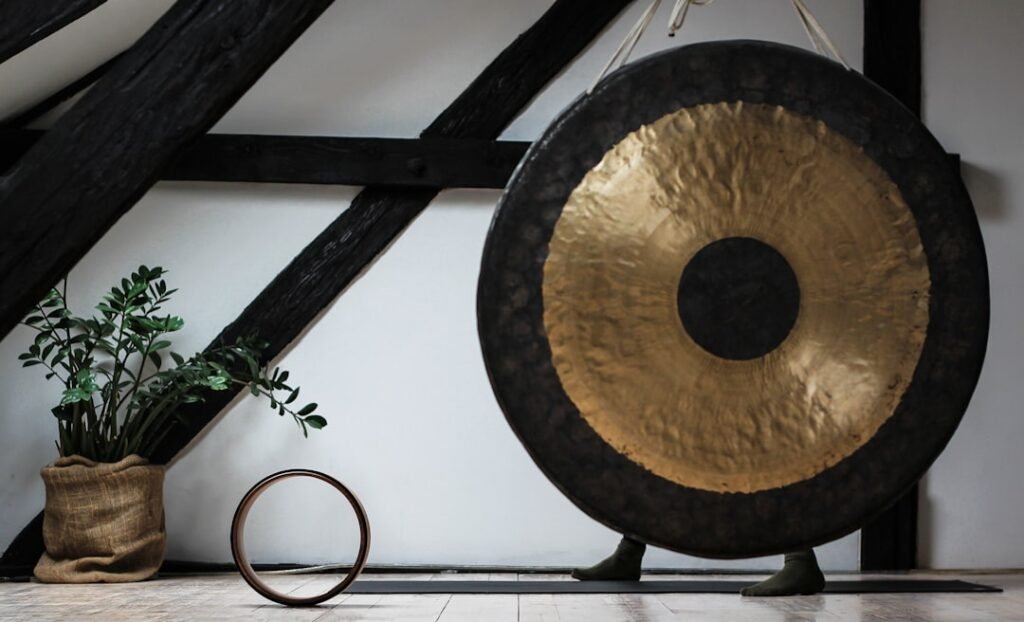In Chinese culture, names carry profound significance, often reflecting the values, aspirations, and characteristics of individuals. The act of naming is not merely a formality; it is a deeply rooted tradition that encompasses familial heritage, cultural identity, and even spiritual beliefs. Names are often chosen based on auspicious meanings, with parents seeking to imbue their children with positive attributes or good fortune.
This practice extends beyond personal names to encompass the names of places, objects, and practices, each laden with meaning that can influence perceptions and interactions. Moreover, the importance of names in Chinese culture is also evident in the way they are constructed. Chinese names typically consist of a surname followed by a given name, with the surname often reflecting the family lineage.
This structure highlights the collectivist nature of Chinese society, where family ties and ancestry are paramount. In this context, the significance of names transcends individual identity, serving as a bridge between generations and a testament to one’s heritage. As such, understanding the nuances of names in Chinese culture is essential for anyone seeking to engage meaningfully with its rich traditions. Spaces are filling up fast! Register for Chinese classes at the LC Chinese School in Oslo today.
Table of Contents
ToggleSummary
- Names in Chinese culture hold significant importance, reflecting the values, beliefs, and traditions of the society.
- Qigong language is deeply rooted in Chinese culture, with each term carrying layers of meaning and symbolism.
- Chinese characters in Qigong represent more than just words; they embody profound symbolism and cultural significance.
- The etymology of Qigong forms provides insight into the historical development and cultural influences of this ancient practice.
- Qigong names are deeply intertwined with traditional Chinese medicine, reflecting the holistic approach to health and well-being.
Understanding the Language of Qigong
Qigong, a holistic practice that integrates physical movement, breath control, and meditation, is steeped in a language that reflects its philosophical underpinnings and cultural heritage. The term “Qigong” itself is derived from two Chinese characters: “Qi,” meaning life force or energy, and “Gong,” which translates to skill or work. Together, they encapsulate the essence of this practice—cultivating one’s life energy through dedicated effort.
This linguistic foundation is crucial for practitioners to grasp the deeper meanings embedded within Qigong. The language of Qigong extends beyond its nomenclature; it encompasses a rich tapestry of terminology that describes various forms, techniques, and philosophies associated with the practice. Each term is carefully chosen to convey specific concepts related to energy flow, health benefits, and spiritual development.
For instance, terms like “Neigong” (internal skill) and “Waigong” (external skill) delineate different approaches within Qigong practice. Understanding this language not only enhances one’s practice but also fosters a deeper connection to the cultural and philosophical roots of Qigong.
The Symbolism of Chinese Characters

Chinese characters are not merely symbols for sounds; they are intricate representations of ideas and concepts that carry layers of meaning. Each character is composed of strokes that can evoke imagery or convey emotions, making them a powerful medium for expression. In the context of Qigong, the characters used to name various forms and techniques are imbued with symbolism that reflects their purpose and significance.
For example, the character for “Qi” (气) is often depicted as a flowing stream, symbolising the dynamic nature of life energy. The symbolism inherent in Chinese characters also extends to their etymology. Many characters are derived from pictographs or ideographs that visually represent their meanings.
This visual aspect allows practitioners to connect more deeply with the essence of Qigong as they engage with the characters that define it. By exploring the symbolism behind these characters, practitioners can gain insights into the philosophies that underpin their practice, enriching their understanding and experience.
Exploring the Etymology of Qigong Forms
The etymology of Qigong forms reveals a fascinating interplay between language, culture, and philosophy. Each form within Qigong has its own unique name that often reflects its origins or intended benefits. For instance, “Ba Duan Jin” (Eight Pieces of Brocade) refers to a series of eight exercises designed to promote health and vitality.
The name itself evokes imagery of precious fabric being woven together, symbolising the harmonious integration of body and mind. Delving into the etymology of these forms not only enhances one’s appreciation for their historical context but also provides insight into their practical applications. Many forms are named after animals or natural elements, drawing inspiration from the world around us.
For example, “Tiger Qigong” mimics the movements of a tiger to cultivate strength and agility. Understanding these etymological connections allows practitioners to embody the qualities associated with each form more fully, fostering a deeper connection to their practice.
Uncovering the Historical Context of Qigong Names
The historical context surrounding Qigong names is rich and multifaceted, reflecting centuries of development within Chinese culture. Qigong has its roots in ancient Chinese medicine, martial arts, and spiritual practices, each contributing to the evolution of its terminology. As practitioners sought to articulate their experiences and insights, names emerged that encapsulated these diverse influences.
For instance, many Qigong forms were developed by monks in Buddhist temples or Taoist practitioners seeking harmony with nature. Understanding this historical context is essential for practitioners who wish to appreciate the depth of their practice. The names of various forms often serve as a window into the philosophies and beliefs that shaped them.
By exploring the historical narratives behind these names, practitioners can cultivate a sense of continuity with those who have come before them, fostering a deeper connection to the lineage of Qigong.
The Influence of Traditional Chinese Medicine on Qigong Names

Traditional Chinese Medicine (TCM) has had a profound impact on the naming conventions within Qigong practice. TCM principles emphasise the balance of Yin and Yang, as well as the flow of Qi through meridians in the body. Many Qigong forms are named in accordance with these principles, reflecting their intended effects on health and well-being.
For example, “Sheng Zhen Gong” (Cultivating True Love) is designed to harmonise emotional states and promote overall health by aligning with TCM’s holistic approach. The influence of TCM on Qigong names extends beyond mere terminology; it shapes the very essence of practice itself. Practitioners often find that understanding the TCM concepts behind their chosen forms enhances their ability to harness Qi effectively.
By recognising how these names relate to TCM principles, practitioners can tailor their practice to address specific health concerns or emotional imbalances.
The Connection Between Qigong Names and Chinese Philosophy
Chinese philosophy plays an integral role in shaping the names and meanings associated with Qigong practices. Concepts such as Daoism and Confucianism have influenced how practitioners perceive energy flow, balance, and harmony within themselves and their environment. Many Qigong forms are named after philosophical ideas or figures that embody these principles.
For instance, “Dao Yin” (Guiding and Pulling) reflects Daoist beliefs about aligning oneself with the natural flow of life. This philosophical connection enriches the practice by providing a framework through which practitioners can explore their own experiences. By contemplating the philosophical underpinnings of Qigong names, individuals can deepen their understanding of themselves and their relationship with the world around them.
This exploration fosters a sense of purpose within one’s practice, encouraging practitioners to embody the principles they seek to cultivate.
The Role of Numerology in Qigong Form Names
Numerology holds a significant place in Chinese culture, influencing various aspects of life including naming conventions in Qigong practices. Certain numbers are considered auspicious or carry specific meanings that resonate with practitioners on multiple levels. For example, the number eight is often associated with prosperity and success in Chinese culture; thus, forms like “Ba Duan Jin” (Eight Pieces of Brocade) not only reflect physical exercises but also embody these positive connotations.
Understanding numerology can enhance one’s practice by providing additional layers of meaning to Qigong forms. Practitioners may find that focusing on these numerical associations helps them align their intentions with their movements, creating a more profound connection between mind and body. By incorporating numerological insights into their practice, individuals can cultivate a greater sense of awareness and purpose.
The Relationship Between Qigong Names and Chinese Mythology
Chinese mythology is rich with stories that explore themes of transformation, balance, and harmony—concepts that resonate deeply within Qigong practice. Many Qigong forms draw inspiration from mythological figures or tales that embody these ideals. For instance, “Wudang Qigong” is named after Wudang Mountain, which is steeped in legend as a sacred site for Taoist practices and martial arts training.
Exploring this relationship between Qigong names and mythology allows practitioners to connect with a broader narrative that transcends time and space. By engaging with these mythological stories, individuals can find inspiration in their own journeys while cultivating a sense of belonging within a larger cultural context. This connection enriches one’s practice by infusing it with meaning that goes beyond physical movements.
Interpreting the Energy and Movement of Qigong Through Chinese Characters
The interpretation of energy and movement within Qigong can be significantly enhanced through an understanding of Chinese characters. Each character embodies not only sound but also visual representation and meaning that can inform one’s practice. For example, the character for “movement” (动) suggests fluidity and change—qualities essential to effective Qigong practice.
By interpreting energy through these characters, practitioners can develop a more nuanced understanding of how to harness Qi effectively during their movements. This approach encourages mindfulness as individuals become attuned to both their physical sensations and the energetic qualities associated with each character. As practitioners deepen their engagement with these interpretations, they may find themselves experiencing greater flow and harmony within their practice.
How to Incorporate the Hidden Meanings of Qigong Names into Your Practice
Incorporating the hidden meanings behind Qigong names into one’s practice can profoundly enhance both understanding and experience. Practitioners can begin by researching the etymology and symbolism associated with their chosen forms—this exploration can provide valuable insights into how best to approach each movement or exercise. By reflecting on these meanings before beginning a session, individuals may find themselves more centred and focused.
Additionally, integrating mindfulness techniques such as visualisation or mantra repetition related to specific names can deepen one’s connection to both movement and intention during practice. For instance, visualising the flowing energy represented by “Qi” while performing movements can help cultivate awareness around energy flow within oneself. Ultimately, embracing these hidden meanings allows practitioners not only to enrich their physical practice but also to foster personal growth on multiple levels.
As you embark on your journey into Qigong or seek to deepen your existing practice, consider exploring courses at LC Chinese School in Oslo. Their comprehensive Chinese courses offer an excellent opportunity to delve into both language and culture while enhancing your understanding of practices like Qigong. Engaging with knowledgeable instructors will provide you with insights into not just the movements but also the rich tapestry of meanings behind them—an invaluable resource for anyone looking to connect more deeply with this ancient art form.







